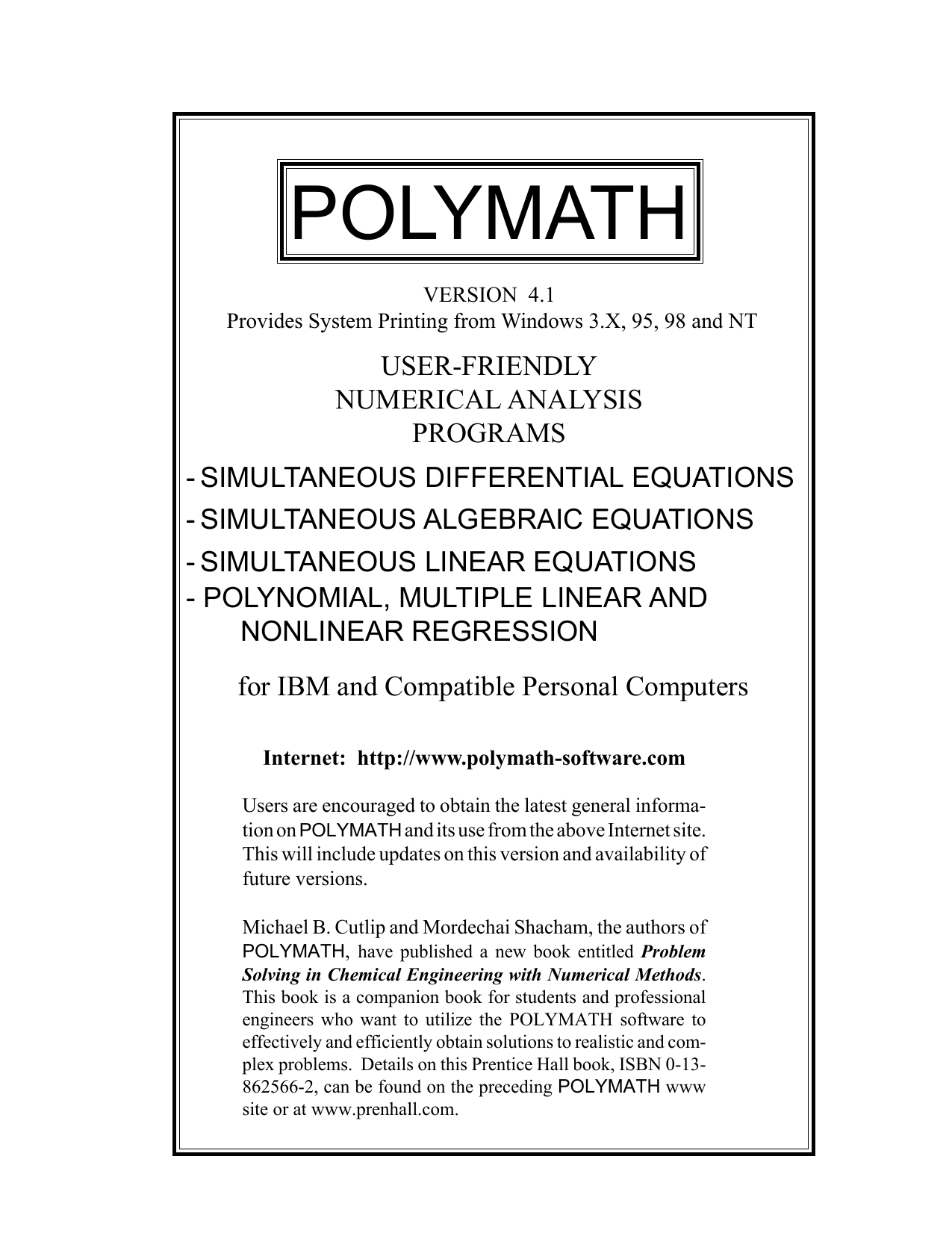

Select the d(x)+ button to add a new differential equation.ĥ.
#Polymath software manual series#
Let’s solve this series of differential equations.Ĥ. Using Polymath, we can monitor the conversion of A, the formation (and disappearance) of B, and the formation of C. Select the d(x)+ button to add a new differential equation. A final value is needed for the independent variable.ġ. Auxiliary algebraic equations must be entered in the form: x = …….įor differential equations, an initial value is needed for all variables. Here t is the independent variable and x is a dependent variable. The differential equations must be entered in the following form: d(x)/d(t)= ………. Results: CA1 initial guess: 1 V initial guess: 300Įxample 2: Solving a System of Ordinary Differential Equations (ODEs) This system may contain two types of equations: 1) first order ordinary differential equations and 2) explicit algebraic equations. Now you should see a blue check mark indicating this system of equations can be solved. Enter the undefined variables by either 1) clicking on the x(=)+ button in the menu or 2) entering directly into the worksheet. The red X displays the undefined variables. You will see the two equations and two initial value guesses in the worksheet. Enter the undefined variables by either 1) clicking on the x(=)+ button in the menu or 2) entering directly into the worksheet.ĩ. Enter the second equation by repeating the same steps.ĩ. You should see the new equation in the worksheet, as well as the comments. Type in the first equation as shown before. This will allow you to enter one of the two equations. In the upper left corner, click the f(x)+ button. Type in the first equation as shown before.ģ. Open a new sheet by clicking on the blank sheet in the upper corner.


Nonlinear Equation Solver Rearrange: 0 = k♼A12 – v(CA0 - CA1)/V 0 = k♼A22 – v(CA1-CA2)/V In Polymath, the appropriate forms for these equations are:į(CA1) = k♼A12 – v(CA0 - CA1)/V = 0 f(V) = k♼A22 – v(CA1-CA2)/V = 0 Can f(CA1) and f(V) be switched?ġ. We will use initial estimates: CA1=1 and V=300. Therefore, we have two remaining variables: variables CA1 and V. Solve system of nonlinear equationsĮxample 1: Nonlinear Equation Solver Consider the following set of equations: k♼A12 = v Open Polymath Fogler from the start menu.ġ.
#Polymath software manual how to#


 0 kommentar(er)
0 kommentar(er)
